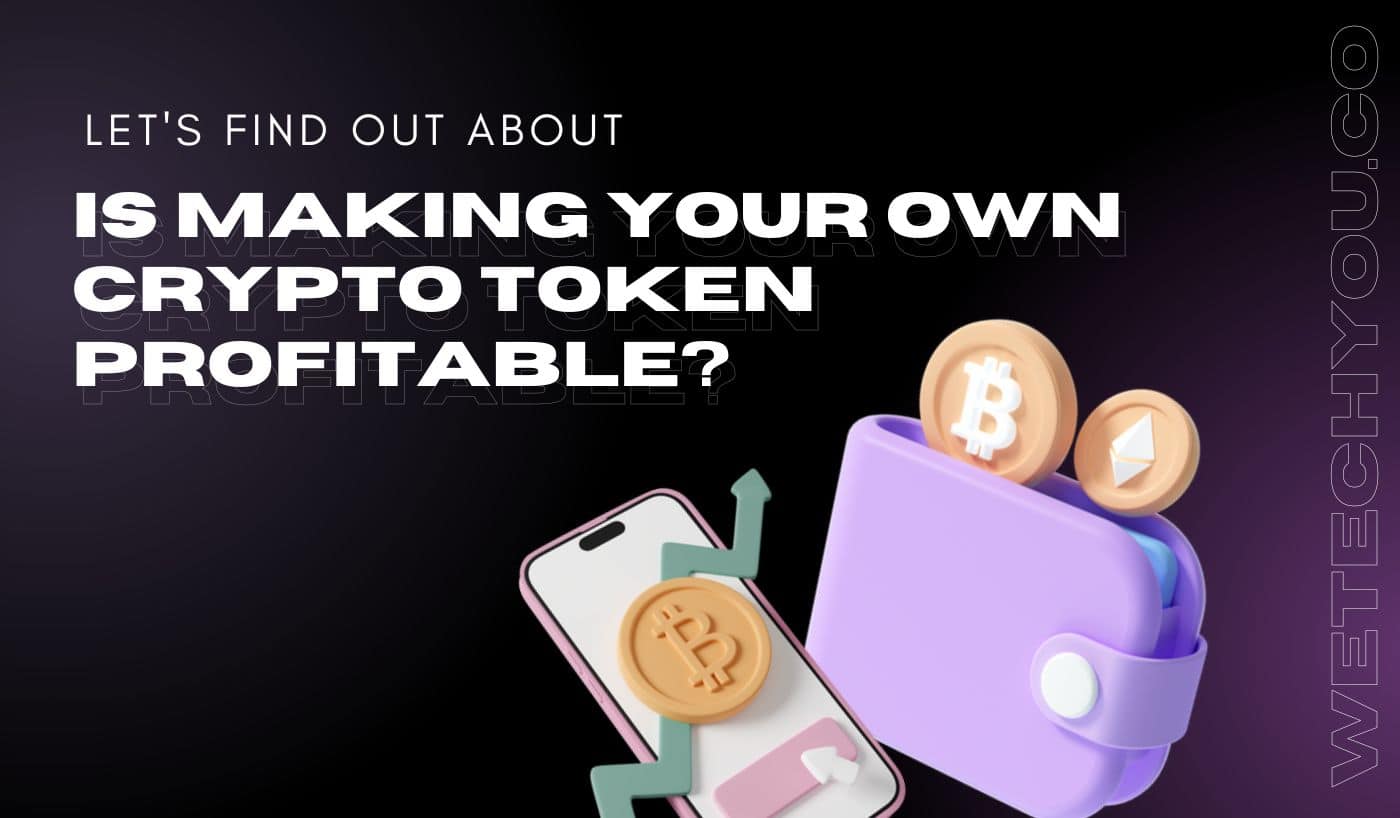Making your own cryptocurrency token is an exciting opportunity gaining traction in recent years. With the right strategy and execution, you can make significant money by creating and selling your digital asset.
While there are risks involved with this venture, it’s important to understand the potential profits before diving into the world of cryptocurrency tokens. In this article, we’ll discuss how you can make money when creating your cryptocurrency token.
What are Cryptocurrency Tokens?
Cryptocurrency tokens are digital assets that secure, trade, and store value. They exist on blockchains and use smart contracts to enable transactions on the underlying network. They typically have a certain level of scarcity associated with them, which is determined by their supply and demand.
Tokens are typically categorized as either utility tokens or security tokens. Utility tokens can be used within the ecosystem of a particular project, while security tokens are regulated investments that represent ownership in an asset such as real estate or stocks.
Different Types of Crypto Tokens
Below are a few of the most popular types of cryptocurrency tokens:
Transactional: These tokens are used for payments within an ecosystem. Examples of transactional tokens include Bitcoin (BTC), Ethereum (ETH), and Litecoin (LTC).
Governance: These tokens give token holders a say in managing the project and its funds. Examples of governance tokens include Maker (MKR) and Augur (REP).
Utility: Utility tokens are used to power an application or network. Examples of utility tokens include Filecoin (FIL) and The Graph (GRT).
Security: Security tokens are regulated investments representing ownership in real estate or stocks. Examples of security tokens include Harbour (RHT) and tZERO (TZRO).
Platform: Platform tokens are used to power and incentivize decentralized applications (dApps). Examples of platform tokens include EOS (EOS) and Neo (NEO).
Non-fungible tokens: These tokens are unique digital assets that can represent physical or virtual items. Examples of non-fungible tokens include CryptoKitties (CK) and Decentraland (MANA).
How to Create a Crypto Token?
Creating a crypto token is a complex process that requires technical expertise and resources. Below is the step-by-step guide to creating a token:
Step 1: Start by Defining Token Properties
When creating a token, the first step is to decide on the properties of your token. This includes defining the token type (transactional, governance, utility, security, platform, or non-fungible), the supply level (total number of tokens available in circulation), and the underlying blockchain network.
You must also specify its typical ERC-20 token, total token supply, name, symbol, and other features.
Step 2: Create a Smart Contract to Issue the Token
Once you’ve defined the properties of your token, it’s time to create a smart contract to issue your token. As the blockchain’s algorithm governs smart contracts, all transactions are secure and immutable.
To create your token, you will need to write a code that defines the features of the token and deploy it on the network. Moreover, while creating a smart contract, you must be careful about the security loopholes and bugs that may lead to network breakdown.
Step 3: Quality Test is Important
Once you’ve written and deployed the code on the network, performing a quality test for your token is important. This involves running several tests to ensure that all the features of your token are working as per its specification.
You should not skip this step, as any bugs or loopholes in the code can potentially lead to the breakdown of the entire network.
Step 4: Token Launch and Listing
Once your token is tested for quality, you can launch it in the market. To ensure that people buy your tokens, you must list them on crypto exchanges supporting your type of token. Moreover, it’s important to do the necessary marketing and promotion to ensure your token reaches the right people.
Profit Potential of Making Your Own Crypto Token
Making a cryptocurrency token can be extremely lucrative if done correctly. As discussed earlier, you can make money through transaction fees, listing fees, market cap value appreciation, and more.
For example, if you create a utility token that is widely adopted, the value of the tokens could increase significantly. Moreover, listing your token on major cryptocurrency exchanges can make money through listing fees.
Another way to make money is by collecting transaction fees in your ecosystem. You can generate significant profits over time by charging a small fee for each transaction within your platform or network.
If your token succeeds and becomes widely adopted, its market cap value could appreciate drastically in the future. This means that a single token could be worth much more than initially bought for.
Risks and Challenges of Making a Crypto Token
Creating a cryptocurrency token is not without risks and challenges. You must know the regulatory laws related to digital assets in your jurisdiction and ensure you abide by them.
Moreover, technological risks are associated with creating tokens, such as developing a secure smart contract. You must carefully test your code for bugs and security loopholes before launching it in the market.
The risk of your token not gaining enough attention or usage can also affect its market cap value. This is why it’s important to have a good marketing and promotion strategy before launching your token.
Another risk of creating a crypto token is that your token’s blockchain network could become obsolete. You must know the latest trends and technologies and ensure your token is up-to-date.
To avoid these risks, a well-thought-out plan and strategy is important before creating your token. With the right planning and execution, you can ensure your crypto token succeeds and generates significant profits.
Common Misconceptions About Crypto Tokens
Creating and trading cryptocurrency tokens can be quite confusing for many people, which leads to various misconceptions. Below are some of the most common myths about crypto tokens:
- Crypto tokens are just like stocks or bonds: While traditional assets (stocks, bonds, etc.) are regulated through central authorities, crypto tokens exist in a decentralized environment and are regulated by the underlying blockchain technology.
- Crypto tokens can be printed like money: Crypto tokens are digital assets on a blockchain network and cannot be printed or duplicated.
- All crypto tokens have an inherent value: Not all tokens have an inherent value; some tokens, such as governance tokens, are created to give holders voting rights within the network, while other tokens, such as utility tokens, are used to access certain services.
- Trading with crypto tokens is illegal: Trading crypto tokens on exchanges or over the counter is not illegal in most countries. However, checking your local laws before investing in any digital asset is important.
- It’s too expensive to create a crypto token: This is not true; with the evolution of decentralized platforms, creating your tokens is now easier and cheaper.
Conclusion
Creating a cryptocurrency token can be quite lucrative if done properly. However, it’s important to understand its risks and challenges before creating your token. With the right planning and execution, you can ensure your crypto token succeeds and generates significant profits.
It is also important to be aware of the common misconceptions about crypto tokens to avoid them while creating your tokens. With this knowledge, you can make an informed decision about whether or not you should create a cryptocurrency token.




